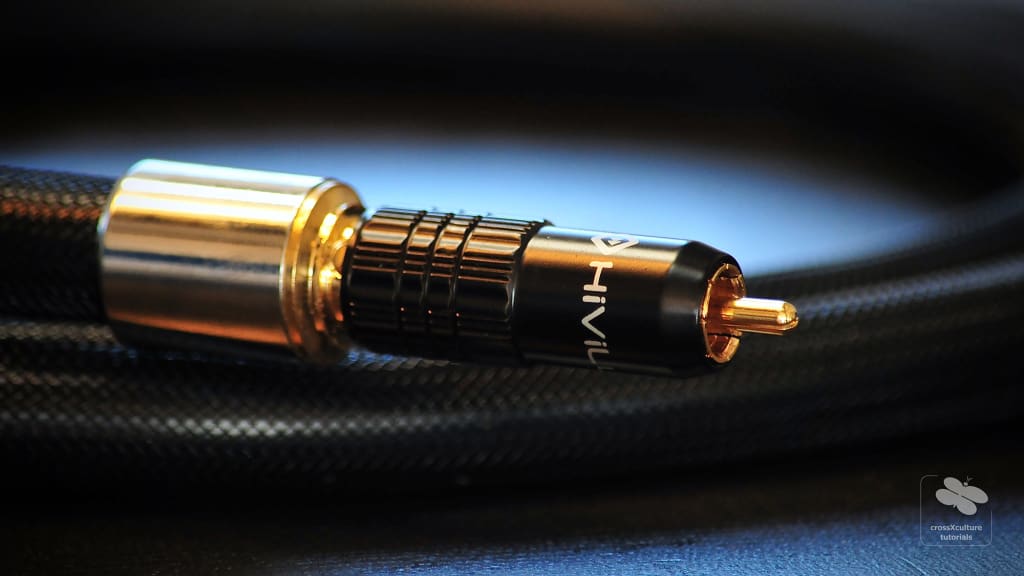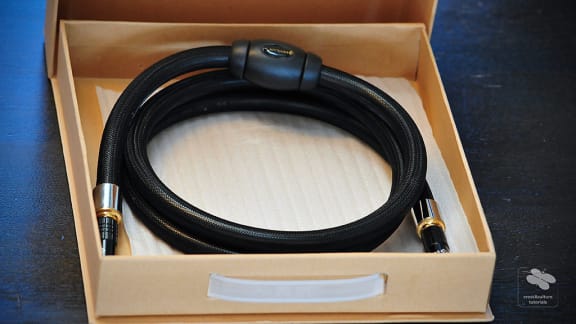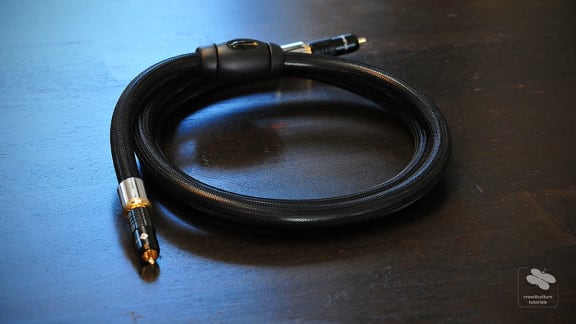Digital Coax - HiViLux Reference
21/11/2020
Author: Karsten Hein
Category: Gear & Review
Tag(s): Cables
It was one of those moments in which anything seems possible and time is irritably suspended while we attempt to determine whether our last move was either utterly ridiculous or absolutely brilliant. Are you familiar with such moments? It seems they usually occur when stepping onto new terrain, especially when brushing against the grain of popular belief. Well, who would ever do that?
Guess no further, because, with this page bearing ‘explorations’ in the title, stepping onto new terrain is precisely what we aim to do, and if we can take down established myths in the process, all the better. However, as we shall see, the subject at hand is especially tricky, because the HiViLux Reference Digital Coax Cable, as it is called, has quite a number of firm (and very vocal) convictions to brush against. For one thing, there is the ‘cables-don’t-matter’ corner, which is made up of audio enthusiasts who have personally never made a test between two cables but will not tire of predicting that they would not hear a difference, even if they tried.
Then there is the ‘digital-is-digital’ corner made up of technically-minded people who claim that the reduction to zeros and ones will make signal loss a thing of the past or that it at least cannot have an influence on audio performance. In the third corner are the ‘if-I-don’t-know-it-it-can’t-be-good’ people. They usually deny that they are even sitting in this corner. And, finally, there is the ‘if-it’s-cheap-it-can’t-be-good corner’, made up of high-brow rather than high-end audio gurus who have bought their way out of the reach of ordinary people and have since come to fear anything that might lessen their monetary lead on the rest of us.
Perhaps now you can imagine the forces against me, as I was unpacking the mid-market coax cable from a new manufacturer to replace a digital cable that I already owned (and that appeared to be working just fine), all in the hope of experiencing a revelation. However, I figured the following: If this cable performed as well as the one I already owned, I would have two cables to connect two devices to our DAC, and the money would not be wasted. And if it performed better, even just a little bit better, victory would be mine, as quality in music reproduction often happens in incremental steps but ends up being purely magical in the sum.
At that point I had already read a lot about OCC copper, and somehow, this ‘new’ type of pore-free copper conductor had made a lot of sense to me. As I had learnt, OCC stands for “Ohno Continuous Cast” and bears the name of the inventor of its manufacturing process. A process by which copper wires are not only produced to keep them oxygen free, as is usual in Oxygen Free Copper or OFC, but also grain boundary free, as if the whole strand was made of one continuous copper crystal, reaching a purity of 99.9997%.
With this new awareness, I had searched the web for OCC interconnects from time to time, only to find overpriced or suspiciously cheap offers, nothing that I really trusted to produce quality results. Until I had finally come across HiViLux cables with their Chinese-owned home cinema shop in Germany. Curious about their offers, I had checked the design of the cables. Their Reference Digital Coaxial Cable had struck me as being well-built and realistically priced so that I had dared to make a purchase. It seemed to me that their range of cables was rather to enhance the sales of their other gear, a fact that seemed convincing.
And, there I was, holding my sturdy-looking cable box bearing the HiViLux logo, not yet sure which of the four ‘corner-jocks’ I would fall prey to first. The cable itself was of impressive 1.4cm diameter and the quality of manufacturing appeared to be excellent. Thick as it was, it proved to be more difficult than usual to arrange behind the rack, and the turn-fastening plugs were a little tight when pushing them onto the cinch/RCA sockets. I had to take especially good care not to break anything. I positioned the HiViLux Reference cable between our Denon DCD 1420 CD-player and our Cambridge Magic DAC 100. The cable to be replaced was a four-times shielded coax that had also been designed for quality SPDIF connections. ‘Music playback’ had been listed among the purposes of use. In this combo of CD player and cable, the DAC had already outperformed the internal one of the CD player with sufficient musicality, offering an increase in stage and dynamics.
Hooking up the HiViLux Reference brought about some surprising revelations that changed our understanding of the setup. For one thing, there was a sudden and significant increase in musicality, dynamics, space between the instruments, and the general ability for the system to breathe. The difference was so intense, and the colours of instruments were so real, that I had a hard time believing that this could all be attributed to the cable design. Something else had to have changed along with the cable, and I soon found out what this was: namely, the presence of a second cable on the DAC’s two coaxial SPDIF inputs. Since I had not yet disconnected the original cable and simply used the second input, both inputs were now connected and thereby sealed off. And it seems this is what the Cambridge DAC needed to function properly. For the DAC to perform well, we should have used a 75 Ohms plug to seal off the open input. This means we had never heard the DAC working properly before and had not been aware of what it was truly capable of. One cannot help but wonder how many owners of this DAC are in that same position.
But, just as clearly, the other 50% of the audible improvements could be attributed to the HiViLux coax cable which corrected the sonic colours, especially those of metal instruments and percussions, to put life-like performances into the room as we had never heard before. On 2Cellos’s album “In2ition” the instruments appeared to be much larger than I was used to, and I heard nuances that had simply been missing before. Familiar songs that had long since lost their lustre for me were highly entertaining once again. Jamie Saft’s album “Loneliness Road” seemed more vibrant and now offered a deeper and wider soundstage. Percussion had a timbre to it that I had only heard during live performances until that day. On Boris Blank’s album “Convergence”, individual samples became visible as such, and it was possible to hear right through to the bottom of the recording.
It took several hours for the fresh-out-of-the-box cable to fully come to life. In the very beginning it seemed slightly analytical with an overly tight bottom end. However, this quickly subsided for a full and lush sound that had me coming back for more over the next few days. What took me by surprise was that the increase in punch and musicality was a more pronounced step up than we had felt when moving from the Tannoy 6 to the larger Tannoy 8 speakers. There was simply more of everything, and for the first time I had the impression of listening to a genuine high end system with every component, from CD-drive all the way to the speakers, being able to show that a great system is so much more than the sum of its parts. At its current market price, this cable offers more than the usual performance and will be a good point of reference when deciding on other components.
Note: Not all HiViLux ‘Reference’ cables are at the same quality level as their digital cable. Happy with my first purchase, I tested a pair of cinch/RCA interconnects of the same design which only gave a rather restrained performance. Their golden plugs showed signs of tarnishing from sudden temperature changes during transport (I used baking soda to restore the shine), one cable was actually 1 cm shorter than the other (!), and the ferrite rings had been fitted at random. The latter of which were probably to blame for the restrained sound. I returned the cinch/RCA interconnects after two days of trying them in different positions. Sadly, they underperformed our existing interconnects in all possible positions and combinations.




